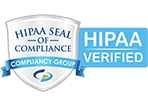5 Tips for Choosing a Pain Management Doctor After Surgery
Struggling with pain after surgery? Your post-surgery journey is a critical time, and the choice of a pain management doctor can make all the difference. While qualifications and experience are the obvious checkpoints, there are a few more nuanced aspects to consider. Here are five tips to help you choose a pain management doctor who’s the perfect fit for your post-surgery recovery.
1. Multidisciplinary Knowledge is Key
Your ideal pain management doctor should be a professional with a multidisciplinary background that brings a wealth of knowledge that goes beyond medication. Look for a provider with a range of expertise that can include physical therapy, acupuncture, and psychological counseling, providing a comprehensive approach to your pain management. By taking a well-rounded approach, you and your doctor can address not just the pain itself but its underlying causes, making for a more effective treatment.
2. Technology Savvy
Medical technology is changing by the day, so having a doctor who stays ahead of these developments is so important. A pain management specialist who is knowledgeable about the latest technologies and treatment methodologies can offer you cutting-edge solutions, like advanced imaging techniques or new minimally invasive procedures that could significantly enhance your recovery process.
3. Clear Communication
Remember, communication is a two-way street. Your doctor should not only be a good listener but also able to explain complex medical jargon in layman’s terms. The ability of your doctor to communicate effectively will empower you with knowledge about your treatment journey, fostering a sense of control and comfort during your recovery.
4. Balanced Medication Approach
While medication can be an essential part of pain management, it should not be the only tool in the toolbox. It’s best to find a doctor who relies on medication judiciously, integrating it into a broader strategy that might include physical therapy or lifestyle changes. The approach should be about managing pain without fostering dependency.
5. Follow-Up Care: A Commitment to Your Recovery
Post-treatment care is as crucial as the treatment itself. Look for a doctor who emphasizes regular follow-up visits for monitoring your progress, making necessary adjustments to your treatment plan, and ensuring that you’re on the right path to recovery. A doctor who prioritizes follow-up care truly demonstrates a commitment to your long-term well-being.
Break Free From Pain at Impact Medical Group of Brandon
You deserve a pain management doctor who understands your unique situation and offers a comprehensive, personalized approach to pain relief. At Impact Medical Group of Brandon, our specialists not only comprehend the challenges you face but are also committed to guiding you through them. We take a holistic approach to pain management, ensuring lasting relief and an improved overall quality of life. Call us today at (813) 522-8885 to schedule your free medical evaluation, and take the first step towards a comfortable recovery.
